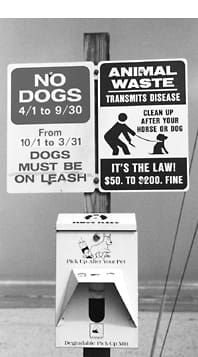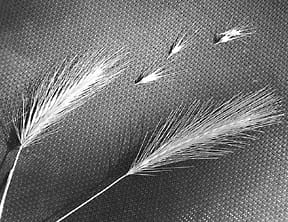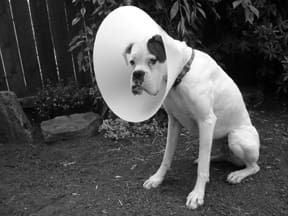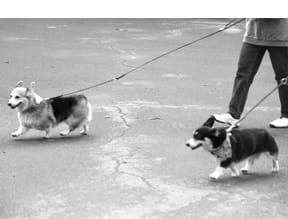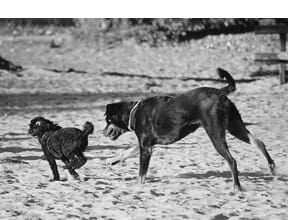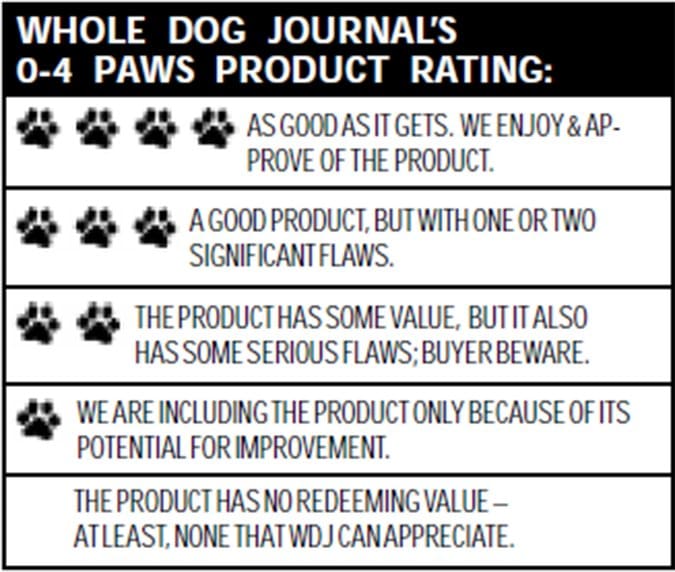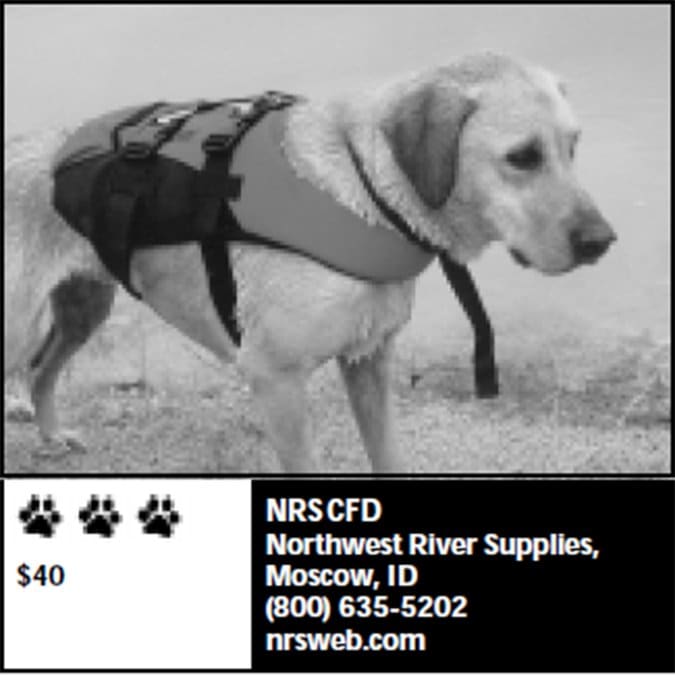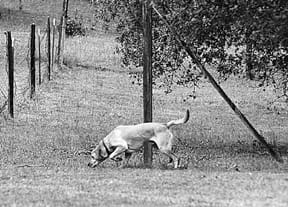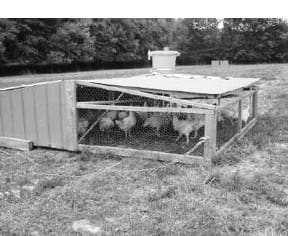DOGS AT THE BEACH OVERVIEW
What you can do. . .
– Ask your dog-loving friends about the location of dog-friendly beaches.
– Follow all posted rules at the beach, without exception.
– Call your dog back to you frequently, giving her a delicious treat each time she comes.
– There are many hazards at the beach, so keep a sharp eye out for sleeper waves, wildlife, and people who don’t like dogs.
Oh the joy of romping on a sandy beach! Splashing in the surf! Wind blowing in your hair, the smell of seaweed and wet sand and the cry of gulls! You and your best friend together regardless of weather.
Sounds romantic and it can be. Most dogs love the beach. If your pup is one of them, you certainly want to give him the opportunity. Besides, you can have a lot of fun, too.

But those of us who live near the shore know that there are also downsides and dangers to beachcombing with canine buddies. As long as you are aware of these, everything will be great. You’ll come home completely de-stressed, and accompanied by a thoroughly worn-out furry friend.
One of the reasons you go to the beach is because of the open space. You can walk and your dog can often run free. So, first thing, get solid ID tags. Even if your dog has an implanted identification microchip, make sure he is wearing easily readable ID tags on his collar. Dogs can get hypnotized by the endless rush of waves, blinded by the glare, and deaf to your calls.
Dogs have keen vision, but it’s better in dim light than bright light, which can nearly blind them. This doesn’t seem to bother them, as they also use their superior sense of smell and hearing to navigate, but it can make it difficult for them to see you if you allow them to get too far away, so keep them close.
Bright sunlight can also mean sunburn for eyes and pink noses and the skin of white short-haired dogs like Dalmatians, Staffordshires, or Boxers. “Doggles” are what you might guess (goggles for dogs), and offer excellent eye protection for the sandy bright beach and for riding in open vehicles. The maker also offers sunburn protection creme and other goodies for the outdoor dog; see www.doggles.com.
There’s no such thing as hearing enhancement for dogs, though. The wonderful susurrus of white noise caused by the surf can make your buddy deaf to your calls – another reason to keep your dog close by.
The beach and surf are chock full of alluring smells and if your hound is only an occasional visitor to the beach, these new smells are totally bewitching. Taking into account sight, sound, and smell, your dog can get high on the whole beach thing. It’s wise to have some ground rules before you go. This means doing some training.
Teach your dog to respond to hand signals (see “Teaching Hand Signals,” WDJ October 2002). Walking on the beach is much more relaxing once your dog knows to occasionally look back and watch you for the signals to come, down, or go play.
To entice your dog to return to you more quickly, keep doggie snacks in your pocket. I’d recommend the ones that don’t melt easily with heat or moisture. Just be ready to be the center of attention for every dog within scent range. You’ll be amazed at how many dogs you attract and how polite they can be if you offer treats.
Overcoming Irritations
Sand. That’s the biggest irritation at the beach. Regular beachgoers know they will never get all the sand out of their car, house, hair, and clothes. Dogs love to dig and roll in the sand and even throw it in the air. If your doggie will let you vacuum him when you get home, as my old Australian Shepherd did, that’s heaven. On hot days, you can rinse your dog with fresh water. Generally, though, you and sand will have to learn to co-exist. I draw the line at my bed.
Day-old seawater stinks, especially in the heat. An hour after you leave the beach your dog will reek. Luckily, when the coat dries, the smell usually goes away. The quicker your pup dries, the better. Keep a pile of old towels in your car to scrub the coat well. He’ll like this as dried salt itches.
Drinking seawater won’t hurt a dog if she just takes a lap or two. Bring plenty of fresh sweet water with you to the beach, and offer it to your dog frequently. Soon she’ll learn to come to you for a drink instead of trying the salt water.
Another good reason to keep your dog close by is to prevent them from rolling in dead things, which are abundant at the shore. Dead fish, birds, marine mammals, and even stinky dead sea plants are like perfume to dogs. GROSS!
Danger in the Dunes
At least reeking smells aren’t dangerous. Up to now, I’ve talked about irritations, but there are dangerous things on the beach – the tide being the first and foremost. You should always know the tide schedule before you go for a walk on the beach. Knowing the tide schedule is especially important if you’re walking along cliffs or undercut dunes where you wouldn’t be able to escape an incoming tide. One of the easiest ways to get the tide schedule for the day is to go online. Sports stores and marina offices will have booklets.
I personally love going to the beach on stormy days – wind, high surf – but keep your dog away from the water. Sleeper waves can snatch him away from you, and rolling logs can crush him. I’ve seen storm surges throw ton-weight stumps high up into the dunes like twigs. Very impressive. Very scary.
Dogs who are not used to ocean swimming should be introduced to waves on a calm day. Water that pulls and pushes is unsettling at first and the smallest waves can knock dogs off their feet and tumble them. Dogs who are natural swimmers learn to handle wave action quickly if given that easy time. My old Aussie became an excellent body surfer. That was his thrill. He turned into such a daredevil I’d put his life jacket on to keep him safe.
And, if the hot sand is too warm for your bare feet, it’s too hot for your pooch’s. His poor pads can burn and blister. Get him onto your blanket or into the water quickly.
You need to be the boss about where your dog can and can’t go. Be considerate and keep your pup out of tide pools. Like human kids left unmonitored, dogs will crush those fragile plants and animals. Often, tide pools are in rocky areas. Wet rocks are extremely slippery and razor sharp from barnacles. I always keep a first aid kit in the truck with a tube of antibiotic cream.
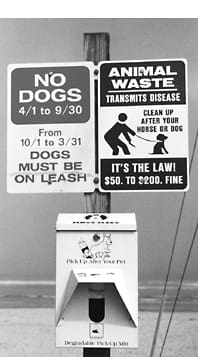
Dogs can be very destructive to wildlife. A dog on a mission can wipe out a dozen ground level nest sites in minutes. A quick Terrier can kill the fastest ground squirrel. Sea birds are safe unless they’re injured or sick. Don’t mess with sick critters. Keeping your dog away from them may be difficult because your pooch will want to investigate the smell, the movement, the sounds. But even an inexperienced city dog can draw upon his genetic heritage and do some serious damage to a “prey” animal, fast.
The opposite is true, too. A pair of Canadian geese will give way to a dog but a flock will turn and attack. It’s ugly to get pecked by a dozen big hissing geese. The one time my Dalmatian/ Aussie mix, Gryphon, met a black bear, thankfully, it was a second year cub and it ran. Talk about a heart stopping moment as I watched the black furry butt and the spotted white butt careening down the shore. Yes, the Oregon coast has a substantial population of black bears, most of whom avoid people and hate dogs.
A word about seals and sea lions. Early in the morning, at night, or during storms, seals will come into the surf line. On very isolated beaches, mother seals will leave the kids alone on the beach while they hunt. Even dogs who are calm and composed around “regular” livestock can go bananas when faced with the exotic sight, sound, and smells of marine mammals. This can be dangerous to the dog, of course, if the bull or protective mother attacks. It’s more likely that your dog will scare and even possibly wound a young seal, or frighten a mother into leaving her baby. If you see something that looks like a seal or sea lion off in the distance, head the other way, or put that leash back on, quick.
Leashes on the Beach?
For each dog owner who is overly obsessive about keeping his dog on a leash there is one who insists the dog run free no matter what. Both attitudes can get a dog and dog owner in trouble. Read and obey the signs at the trail head or beach entrance.
One note of advice: If you meet up with another leashed dog and there is acrimony, let the dogs off the leashes. For some reason, dogs on leashes will have at each other much more readily than free-ranging dogs.
Go ahead and leash your dog whenever you meet other people; never forget that some people have strong anti-dog attitudes. Offer your dog a treat every time you snap the leash on, and let him off again frequently; this way, he’ll learn that going on leash is just as enjoyable as getting let off.
Train your dog not to spontaneously jump up on people and to sit on command from a distance. That helps. Be wary of people walking along the beach without dogs. We have met vacationing individuals who are dog-lonely and love having a chance to catch up on dog smooches. Mostly though, people alone want to stay that way.
If a family with small children doesn’t have dogs with them, there’s a better than even chance that the little ones will be terrified of dogs. Then there’s the problem of the over-trusting child. If a child wants to romp with your dog, set rules and stick to them for the kid’s safety and for your legal protection.
All in all, just be aware. Not everyone wants instant friendship from an 80-pound Golden or even a 5-pound Peke. It’s no fun having a strange mutt rampage through your picnic. Practice those hand signals, or get your dog back on his leash.
After all these do’s and don’ts, if you’re righteously intimidated about exploring the shore with your doggie, that’s a good thing. Caution and care are important. Having a really good time is always predicated on feeling secure, being in control, and being prepared. Mostly, dogs on the beach just want to have fun.
Ann Fillmore is a freelance writer from Reedsport, Oregon. This is her first article for WDJ.


